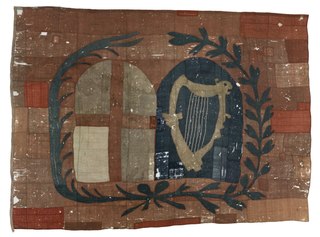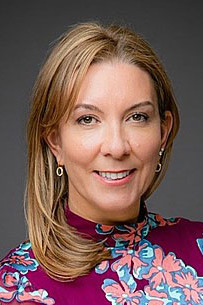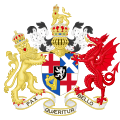
The Commonwealth was the political structure during the period from 1649 to 1660 when England and Wales, later along with Ireland and Scotland, were governed as a republic after the end of the Second English Civil War and the trial and execution of Charles I. The republic's existence was declared through "An Act declaring England to be a Commonwealth", adopted by the Rump Parliament on 19 May 1649. Power in the early Commonwealth was vested primarily in the Parliament and a Council of State. During the period, fighting continued, particularly in Ireland and Scotland, between the parliamentary forces and those opposed to them, as part of what is now generally referred to as the Third English Civil War.
Lord Protector was a title that has been used in British constitutional law for the head of state. It was also a particular title for the British heads of state in respect to the established church. It was sometimes used to refer to holders of other temporary posts; for example, a regent acting for the absent monarch.

The Restoration of the Stuart monarchy in the kingdoms of England, Scotland and Ireland took place in 1660 when King Charles II returned from exile in continental Europe. The preceding period of the Protectorate and the civil wars came to be known as the Interregnum (1649–1660).

The Protectorate was the period of the Commonwealth during which England and Wales, Scotland, Ireland and the English overseas possessions were governed by a Lord Protector as a republic. The Protectorate began in 1653, when the dissolution of the Rump Parliament and then Barebone's Parliament allowed Oliver Cromwell to be appointed Lord Protector of the Commonwealth under the terms of the Instrument of Government. In 1659, the Protectorate Parliament was dissolved by the Committee of Safety as Richard Cromwell, who had succeeded his father as Lord Protector, was unable to keep control of the Parliament and the Army. That marked the end of the Protectorate and the start of a second period of rule by the Rump Parliament as the legislature and the Council of State as the executive.

John Thurloe was an English politician who served as secretary to the council of state in Protectorate England and spymaster for Oliver Cromwell. He was from Great Milton in Oxfordshire and of Lincoln's Inn,

There were a variety of flags flown by ships of the Commonwealth during the Interregnum of 1649–1660.
This is a timeline of events leading up to, culminating in, and resulting from the English Civil Wars.

John Jones Maesygarnedd was a Welsh military leader and politician, known as one of the regicides of King Charles I following the English Civil War. A brother-in-law of Oliver Cromwell, Jones was a Parliamentarian and an avid republican at a time when most of Wales was Royalist, and became one of 57 commissioners that signed the death warrant authorising the execution of Charles I following his trial. After the Restoration of the monarchy, Jones was one of few excluded from the general amnesty in the Indemnity and Oblivion Act, and was tried, found guilty, then hanged, drawn and quartered at Charing Cross.

The English Council of State, later also known as the Protector's Privy Council, was first appointed by the Rump Parliament on 14 February 1649 after the execution of King Charles I.

The Third Protectorate Parliament sat for one session, from 27 January 1659 until 22 April 1659, with Chaloner Chute and Thomas Bampfylde as the Speakers of the House of Commons. It was a bicameral Parliament, with an Upper House having a power of veto over the Commons.

The Clerk of the Crown in Chancery in Great Britain is a senior civil servant who is the head of the Crown Office.

Henry Scobell was an English Parliamentary official, and editor of official publications. He was clerk to the Long Parliament, and wrote on parliamentary procedure and precedents.
Edmund Dunch, 1st Baron Burnell of East Wittenham (1602–1678) was an English Member of Parliament who supported the Parliamentary cause before and during the English Civil War. During the Interregnum he sat as a member of parliament. In 1659, after the Protectorate and before the Restoration, regaining his seat in the Rump he also sat in Committee of Safety. After the restoration of the monarchy he was not exempted under the Act of Pardon and Oblivion but the titles granted to him under the Protectorate were not recognised under the restored monarchy of Charles II.

Sir John Lenthall was an English Member of Parliament. He was elected MP for Gloucester in 1645, knighted by Oliver Cromwell in 1658 and made Governor of Windsor Castle from 1657 to 1660. After the 1660 Restoration of the Monarchy he was pricked Sheriff of Oxfordshire for 1672–73 and knighted a second time by Charles II in 1677.
The Commonwealth and Protectorate (1649-1660) refers to the kingless governments of England, Scotland, Great Britain and Ireland during the Interregnum between the actual reigns of the Stuart King Charles I (1625-1649) and his son King Charles II (1660-1685).
Thomas Willis (1576–1656) was a member of the English landed gentry and Clerk of the Crown in Chancery at the outbreak of the English Civil War, owing to which he suffered the loss of his position and some of his estates. He appears in the 1619 update to the 1575 Visitation of Cambridgeshire, with reference made to his position and ownership of lands at Ashe, Hampshire.

Robert Brewster (1599–1663) was an English landowner of Parliamentarian sympathies who sat in the House of Commons at various times between 1645 and 1659.
During the Protectorate period (1653–1659) of the Commonwealth of England, the Lord Protector reserved the power previously held by the monarch to confer knighthoods, baronetcies and peerages.
Events from the 1650s in the Kingdom of Scotland.
A Clerk of the Crown is a clerk who usually works for a monarch or such royal head of state. The term is mostly used in the United Kingdom to refer to the office of the Clerk of the Crown in Chancery, though the office has undergone different titles throughout history.












